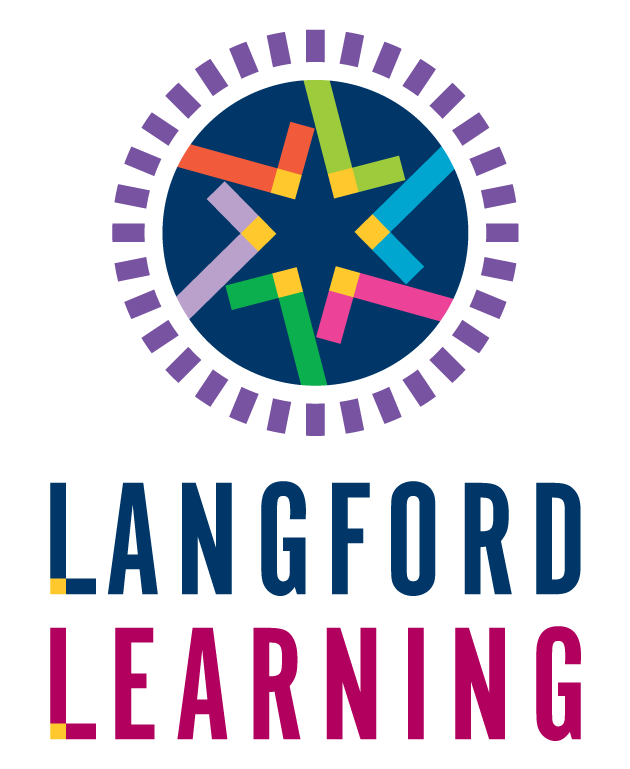Optimization of a System: Deming in Education with David P. Langford (Part 7)
- David Langford
- Education, Podcast
- 0 Comments

This podcast was originally published on In Their Own Words for The W. Edwards Deming Institute
In this episode, David and Andrew discuss going beyond solving problems in schools to preventing them from happening. David also shares a tool for finding the area where optimization of the system would have the greatest impact.
In the episode, David shares his screen with Andrew and fills in a diagram. The beginning version has post-it note images around the sides, and the final version has lines drawn between all the post-it notes. See below:


TRANSCRIPT
Stotz: My name is Andrew Stotz and I’ll be your host as we continue our journey into the teachings of Dr. W. Edwards Deming. Today, I’m continuing my discussion with David P. Langford, who has devoted his life to applying Dr. Deming’s philosophy to education, and he offers us his practical advice for implementation. Today’s topic is: optimization of a system to prevent problems. David, take it away.
Langford: Thank you, Andrew. It’s good to be here again. So yes, today I wanted to talk a little bit about just the optimization of the system and what does that mean. So to go back to Deming’s System of Profound Knowledge and understanding systems is critical part of the System of Profound Knowledge. And within the System of Profound Knowledge, what is a system? And so there’s all that, and we talked a little bit about that in the past, but today I just wanted to talk a little bit about the optimization of the system and what does that actually mean? So it’s not a matter of just trying hard. I’m gonna optimize, so I’m just gonna work hard, I’m gonna try hard, I’m gonna get better.
Langford: In fact, Deming was famous for saying that we’re being killed by people’s best efforts, and in education that runs rampant. He also said that copying can lead to disaster. And just those two phrases probably discounts 80-90% of what goes on in education now, because every time I do a seminar, somebody says, where else is this happening? Or Can I have a copy of that? Or somebody will go and they’ll do a presentation somewhere, and everybody will just wanna copy that. So it’s a sort of like, no thinking involved, just copy steps one, two, three, and four and things will get better.
Stotz: Cookie-cutter.
Langford: And that… Sometimes that just copying to try to optimize a system is better than doing nothing at all, but it’s also a trial and error process. Trial and error is very expensive and very time-consuming, and you have a great chance that you’re not going to improve anything, right?
Because systems that were developed at other places, so somebody, some leader comes into a school system somewhere and they do a great job in reading or whatever it might be, because they start studying their system and figuring out a process, and then they decide they’re gonna market that to other people. And so you see the results of what they did, but it doesn’t take in any understanding of the variation in systems, and you could have variation in schools when they’re right across the street from each other. Totally different clientele and makeup of the student body and the staff and background, and all kinds of variation, so it doesn’t necessarily work just to copy and apply something that was successful someplace else. Now, it is…
Stotz: And one question about that is that, I guess part of that is because the aim may be different.
If I think about when I was writing research in investment banks, the aim was to write a big, long research report. We had a lot of resources and all that, but when I set up my own firm, my aim was, how do I make this more efficient? And so I created a whole different system with a different aim, and therefore, if somebody wanted to go from my company to work in that company or vice versa, it wasn’t like you could just copy what we were doing, there’s a whole operating system that we created based upon a different aim.
Langford: Yeah, I remember when I first started things in classrooms with Deming help, and then people would come to visit classrooms and I’d always have the students explain what was going on and what they were doing, and invariably, my kids got really cagey because the visitors would say, “Oh, that’s really cool. Can I have a copy of that?” And the kids would say, “Yeah, you can have a copy of it, but it’s not gonna do you any good.” And they’d say, “What, what, wait, wait, what do you mean?” And they said, “Because you don’t understand the theory.” So you don’t understand what’s going on here, and you just think you can just copy yourself to success and it just never works.
Langford: The other problem I see in optimization of systems is that people sort of come in with preconceived ideas about what they think is the problem. In fact, I had a principal at one time in one of the seminars, and he said, “I don’t need all those PDSA stuff and tools and process and… I just… What the problem is.” And, well, if you have that kind of divine intervention, why would you even come to a seminar on improving schools and learning if you already know, and if you already know it, why haven’t you done it? Deming often said, “Well, you’ve been snoop goofing around for the last 20 years.”
Langford: If you’re that smart, you should be able… You should have already done it. So I guess seminars I typically try to coach people, I say, “You can come with a list of possible problems and opportunities that you might wanna work on,” and therefore, that’s why we use the word probletunities, and my students said all of our problems are… All of our problems start looking like an opportunity, and that’s a great kinda way to go through life, that, “Okay, we got a big problem and okay it’s an opportunity, it’s an opportunity, we can make it better. We can do something here”.
Stotz: Yeah.
Langford: The problem also shows you the deficit within the system or the problem within the system, and… So I wanted to kinda get into a little bit about, well, how would you go about sort of sorting out what to work on or how to move forward when you’re trying to optimize the system. So I’m gonna actually share my screen.
Stotz: Great.
Langford: And I’m gonna take a chance at trying to do a tool here, and we’re gonna do… If you’re
watching the video, it’s pretty simple, but we’ll try to explain it with the audio as well as we
go along. But what we’re gonna do is what’s called an interrelationship digraph, okay? And I’ve got five common areas here that we often find in schools. Teachers will say things like, “We have a lack of effort around here.” Even say, “Students don’t understand the concepts.” “Oh, the teacher attitudes around here is… They’re bad,” and, “Oh, we gotta work on the student attitudes. We gotta do something to them until… Make them have a better attitude.” And “there’s no time to do all these kinds of things.”
Langford: So if that sounds like your system and you’re starting to think about, “Well, okay, here’s all the kinds of problems that we’re kinda working on,” so what we do here is we pick a color and we start off, we say, “Okay, is there a relationship between lack of effort and don’t understand the concept?” And understanding the concepts is really important in neuroscience, that taps into the sense of meaning with people, et cetera. And so you have to say, is there a relationship? And so, usually, we do this in a group, being able to discuss and you say, “Yes, I think there’s a relationship.” So if you think there’s a relationship, you just draw a line between the two.
Langford: There’s a second question, which affects which the most. Does our lack of effort affect not understanding concepts, or does not understanding concepts affect lack of effort? And so usually, I get the… People go into higher order thinking, it looks like this, with their mouths open and…
Langford: Because their brain is having to figure out, “Okay, how does that work?” So we have the… Let’s say we have a discussion and we decide, “Well, if we understood the concepts, we’re probably gonna get more effort out of people, so I’m gonna put an arrow going that way.” Then we have a lack of effort and teacher attitudes. Well, is there a relationship? If there is I draw a line. There’s not, then I don’t draw a line. Secondly…
Stotz: For the viewing… For the listening audience, just to highlight what David’s got here, he’s got a blank piece of paper with a kind of a circle form. And in the upper right hand corner, it says, “Lack of effort.” Just below that, it says, “Don’t understand the concept.” And at the bottom, it says, “Teacher attitudes,” and then on the left side, it says, “Student attitudes,” and then in the upper left, it says, “No time,” and then you’re starting to draw lines connecting these two things to show the relationships. So continue on.
Langford: Okay, so we’ve decided that lack of effort and teacher attitudes are connected, because if my students had a lot more… Put in a lot more more effort, that would probably affect my attitude as a teacher, I would probably like that. So we’re gonna make the arrow going that way. So then we have lack of effort and student attitudes. You have to say, “Are those connected?” What do you think, Andrew?
Stotz: I would say yes, lack of effort and student attitudes? Seems like it would be.
Langford: So if they put in more effort, they probably have a better attitude?
Stotz: It seems to me that, that would be the case, but I don’t know. I’m gonna follow your lead. I’m learning, man.
Langford: So we make the arrow go that way. So then we have lack of effort and no time. So I would say yes, those are connected, and so I’d say, “Wow, well, if we were using… If we had more effort going on, we’d probably be making better use of our time.” That would be… Or we could say, if we had more time, we could probably have better effort. So sometimes it’s a 50/50 kind of proposition. And so I often tell people, if it’s 50/50, just flip a coin, because whichever way it goes, if you end up working on one, you win. You work on the other, you win too, so.
Stotz: Right.
Langford: So let’s say that no time… Not enough time is affecting our lack of effort. So we’ve already gotten one time around the circle, and so this is gonna get a lot faster now. And so, now we’re gonna go to the next concept in the circle, and then we’re gonna go through that in a relationship. So we have “don’t understand the concept” and “teacher attitudes.” Well, if students understood the concept better, I would say that’s probably gonna affect teacher attitude. And then now we have “don’t understand the concept” and “student attitudes.” I would venture the same thing there, that if they understood the concepts, they’re gonna have a better attitude. And how about “don’t understand the concept” and “not enough time”?
Stotz: Yep.
Langford: So probably, that’s affecting not enough time. Okay. So now we’re gonna pick a different color, and we’re gonna go to teacher attitudes, and it’s getting easier, we’re almost there. So now we have “teacher attitudes” and “student attitudes.” Here’s an interesting problem. Which of that… Well, number one, is there a relationship?
Langford: What do you think, Andrew?
Stotz: It’s symbiotic, it feels like to me, but I don’t know.
Langford: They’re related in some way, right?
Stotz: Yup.
Langford: Yup.
Stotz: I guess if you asked the students, they’ll give you one answer, and if you ask a teacher, they’ll give you another answer.
Langford: Yeah. So here’s a chicken and egg question, which affects which the most? Do teacher attitudes affect student attitudes, or do student attitudes affect teacher attitudes?
Stotz: I would say that ultimately the teacher is the one responsible for making sure that the aim of the classroom is being achieved. So if their attitude wasn’t right, it would be very hard for students to get it right. What do you think of that answer, David?
Langford: Yup, I would agree with you. So students are often victims of the system, and they’re gonna respond in ways to whatever the teacher’s attitude is.
Stotz: Yup.
Langford: So then we have “teacher attitude” and “not enough time” or no time. So I’d say those are definitely connected, ’cause I hear that all the time, “Oh, we don’t have enough time to do these things.” So I’m gonna draw a line there. Which affects which the most?
Stotz: I think that the reality is we all have not enough time, so the attitude of the teacher probably is the most important thing to resolve the issue of not enough time.
Langford: Yeah. But if you’re feeling hurried all the time and rushed and can’t get everything done, and that’s gonna be affecting your attitude.
Stotz: That’s the true.
Langford: Is that what you’re saying?
Stotz: Yeah, I mean, if you’re overloaded, and you can’t achieve what you want to achieve, that definitely will hurt your attitude.
Langford: Okay. And then I… And we just have one last connection, we have “not enough time” and “student attitudes.” So I’d say, yeah, those are definitely… I’m gonna draw a line, ’cause
those are connected. Then I have to say which affects which the most. And same thing for students, is, if I don’t have enough time to get this assignment done and get it to the level of quality that is being asked for, and maybe I’ve got that going on multiple other classes, and I’m feeling rushed and pressured, etcetera, that’s probably gonna affect my attitude to some degree.
Stotz: Yup.
Langford: You have to draw a line. Okay, so when we get all finished with this in a relationship digraph, we go around, and we simply just count the ins and outs, how many arrows coming in and how many coming out. So for lack of effort, we’ve got two arrows coming in, and we’ve got two
arrows going out.
Langford: So I’m gonna just put two-comma-two next to that. For, “Don’t understand the concept,” we have zero arrows coming in, and we have four arrows coming out, meaning that, that area is affecting four other areas. And then down at teacher attitudes, we’ve got three coming in, we’ve got one going out, so a lot of things affect the teacher’s attitude. And student attitudes, we’ve got four arrows coming in, and we’ve got zero going out. And now, with “no time”, we’ve got one coming in and three coming out. So when we get all finished with this, what we try to look at is, we wanna think about in optimizing a system, what are we gonna work on that’s gonna give us the very biggest bang for the buck, so to speak, right? ‘Cause we… All of us, no matter if you’re in business or school… Education or whatever, you only have so much time and money to do things, right?
Langford: And so we look for the area that has the most arrows coming out of it. And in our simple little example here, that’s, “Don’t understand the concept.” So if this was a school I was working with, and these are the five key areas that… Complaints or problems that they identified, I would be pushing them to say, “Look, start working on teaching concepts better, ways that kids can understand the concepts,” etcetera. And if you do that, teacher’s gonna have a better attitude, student’s gonna have a better attitude. They’re gonna make more efficient use of their time, and they’re gonna put in more effort.
Stotz: Fantastic. That… And that’s very clear. For the listeners out there, it’s a diagram with a lot of arrows going in and out of the different topics. But ultimately, what’s very clear is there’s one topic, “Don’t understand the concept,” that is impacting a lot of other things, and therefore it appears as though that is the one that should be worked on.
Langford: Yeah. The big “aha” on this too is that, what… Traditionally, where do schools spend their time? They spend their time trying to improve student attitudes, or they’re gonna spend their time trying to improve teacher attitudes. And it’s especially relevant now coming out of the pandemic, because across… At least across the US, I’m sure it’s probably world-wide, that teachers are feeling really overwhelmed, and now they have all this video stuff to work with, and they still don’t have all their students coming back, and there’s all kinds of issues and problems and stuff going on. And so we need to do things to improve teacher attitudes, right? We need to have some teacher parties and maybe have a Teacher of the Year Award and those kinds of things to try to improve people’s attitudes. And it’s not understanding where attitude is coming from the system itself. Deming talked about that anywhere from 94-98% of the effects of the system are coming from the system itself. And if you’re not addressing that, you’re not doing anything.
You’re just spinning your wheels, and next year you’re gonna have just as depressed of teachers as you do this year. And so, then what are you gonna do? Well, we’re gonna have to have more pizza parties, and we’re gonna have to have other kinds of ways to sort of bribe people into feeling better about the… Their situation, “Oh, I feel better about being in a horrible school,” kind of the situation.
Stotz: Right. And it feels like the idea of changing into a very, very comfortable chair from a very uncomfortable chair on the Titanic.
Langford: Yeah, that’s right.
Stotz: Fantastic. But let…
Langford: And what Deming said, I think one time at a seminar, was that, pretty soon you’re only left with the people who can’t get a job someplace else.
Langford: Because all the people that could go some place else and work are gonna… We’re gonna get out of here, ’cause nothing ever gets better year after year after year, but we’re having these wonderful parties and everything, but that only lasts a little while.
Stotz: Yeah.
Langford: So it kind of leans us back into the discussion of intrinsic motivation versus extrinsic motivations, and so these types of tools help people spend their time wisely working on an opportunity that could actually have a significant benefit.
Stotz: Right.
Langford: But sometimes when I do this with groups in schools as special aid, we get all finished and people will say, “But we don’t wanna work on that. That’s hard.”
Stotz: And there’s the secret.
Langford: Yeah, because… And that’s what happens, is that we often work on the things that are really easy, right?
Stotz: Yup.
Langford: We don’t wanna work on something that’s really hard and difficult, nut to crack, right? It’s much easier just to do this thing over here and wave the magic wand and then wish we had better students, or better teachers, or better parents, or…
Stotz: Well, it’s definitely a road to competitive advantage in the business world if you take on hard projects, because you know majority of people won’t do it, and therefore you can achieve another level and basically not be attacked from your competitor. I wanna summarize what I took away and then maybe you add in a little bit and we’ll wrap it up. So first of all, we’re talking about optimization of a system to prevent problems. You talked at the beginning about, it’s not just
about trying harder. You also talked about the idea of copying can lead to disaster as Dr. Deming had said, you know that you could… You’re bringing something that works for one system into another, and no systems are identical or even close maybe in some cases. The next thing you mentioned about was best efforts, which Dr. Deming said, “We’re being killed by best efforts, and it’s not enough. It’s the right effort put to the right problem,” which then brought us to your discussion about viewing problems in a positive light and seeing them as opportunities. And finally, you went through the interrelationship diagram to help us identify what particular problem of many is having the biggest impact or the most detrimental impact on the organization, and a
tool to identify that, and then to identify that: “Okay, that’s where we’re gonna focus.” Anything else you would add to that?
Langford: That’s well done, Andrew, you were paying attention.
Stotz: Yes, I sometimes have a blank stare, ladies and gentleman, but actually I am trying my best to listen and learn, and in fact I…
Langford: No, that was an excellent wrap up.
Stotz: Yes. Fantastic. Well…
Langford: So, I would say, yeah, just to wrap it up, the optimization of a system, in Deming’s Profound Knowledge he also talks about, you have to have a theory. What’s your theory, theory of knowledge? Well, is your theory optimization of a system? So you kind of see how all these things start to work together to make things happen, and so if I have that constantly in the back of my head, “How am I gonna optimize the system?” So you and I have been working on trying to optimize the podcast system, and we’ve gotten better microphones and better cameras, and better lighting, and we just keep working because it’s a continual improvement, right? As soon as we think we’ve got it better, then there’s probably gonna be a better camera that comes out, or something better, and you have to think about…
Stotz: David, I got a little depressed when you said that trial and error can be really expensive, I think we definitely got some trial and error going on here.
Stotz: Well, let’s wrap it up. On behalf of everyone at the Deming Institute, David, I wanna thank you again for this discussion, and for listeners: remember to go to deming.org to continue your journey. Now, this is your host, Andrew Stotz, and I wanna leave you with one of my favorite quotes from Dr. Deming, “People are entitled to joy in work.”









